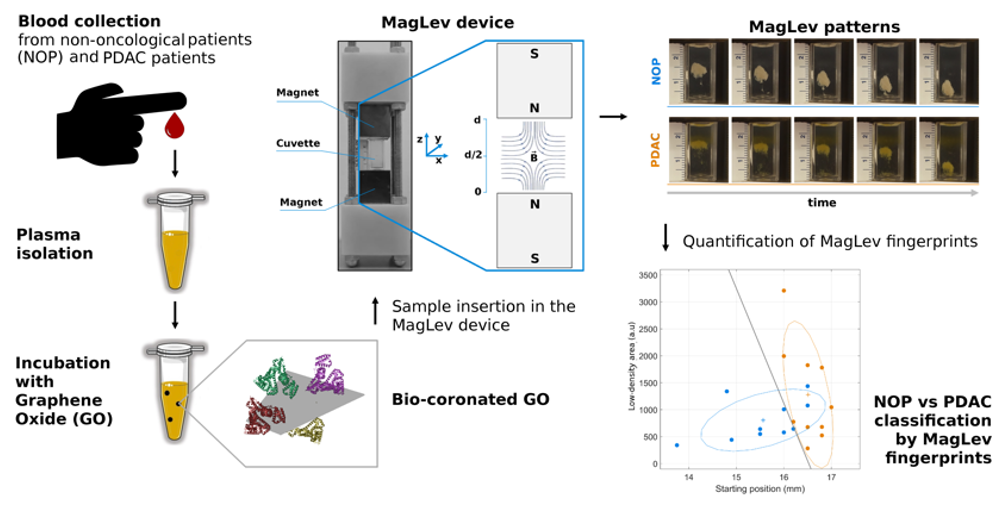Press Release: How magnetic levitation can help diagnose pancreatic cancer
Magnetic levitation is commonly associated with incredibly rapid passenger transport trains. However, thanks to the support of the Central European Research Infrastructure Consortium (CERIC-ERIC), a group of scientists employed this technique to pave the way for the early diagnosis of pancreatic adenocarcinoma. “This tumour is as lethal as it is silent since in 90% of the cases it’s diagnosed when already in an advanced status. Its incidence is increasing and will likely become the second cause of cancer-related death in the next decade. The decrease of its lethality necessarily involves the adoption of early diagnosis methods”, says Prof. Daniela Pozzi, correspondent author and co-founder with Prof. Giulio Caracciolo of the NanoDelivery Lab of the “Sapienza” University of Rome.
The proof-of-concept study, published in Cancers, employs graphene oxide nanoparticles mixed with the patients’ plasma, taken with a standard blood sampling. Plasma proteins naturally tend to cover the nanoparticles forming a protein corona, whose composition is due to several factors that can reflect the patient’s health status. Nanoparticles are then moved into a magnetic field where they fluctuate according to specific patterns, revealing the presence of biomarkers associated with pancreatic cancer.

Scientists were able to gather details on the interaction among plasma proteins and nanoparticles thanks to X-ray scattering experiments made at the SAXS beamline of the Graz Technical University, located at the Elettra synchrotron in Trieste. Researchers obtained free access to the research instruments thanks to CERIC-ERIC, of which Graz Technical University and Elettra represent the Austrian and the Italian CERIC partners, respectively. “Results are encouraging, and further work could lead to a new diagnostic assay for a highly lethal tumour that impacts many people’s lives”, concludes Prof. Daniela Pozzi.
CERIC-ERIC is a multidisciplinary research infrastructure established by the European Commission in 2014. It’s open for users in all fields of materials and biomaterials sciences, and nanotechnology. With a single entry point to some of the leading national research infrastructures in 8 European countries, it allows structural investigation, analysis and synthesis of materials, using photon-, electron-, neutron- and ion-based techniques. CERIC enables the delivery of innovative solutions to societal challenges in the fields of energy, health, food, cultural heritage and more.
-
12.04.2024
Call for Executive Director
-
12.04.2024 | call for proposals, Research
20th Call for Proposals: an overview



